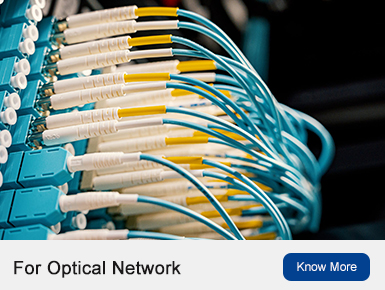Have you ever wondered how information is transmitted through optical fibers? One crucial component that enables this process is the circulator in optical fiber. In this tutorial, we will explore the concept of a circulator and its role in fiber optic systems.
Understanding the Circulator in Optical Fiber
The circulator is an essential device used in optical communication systems to direct light signals efficiently. It allows for unidirectional transmission of light waves, enabling simultaneous data transfer between multiple components without interference.
This compact device consists of three or more ports that are interconnected by waveguides. Each port serves a specific purpose, such as input, output, and isolation. The circulator operates based on non-reciprocal magneto-optical effects or polarization-dependent properties.
When light enters the input port, it propagates through one direction while being isolated from other ports. This unique characteristic makes it ideal for various applications like wavelength division multiplexing (WDM) systems and fiber optic sensors.
Optizone Technology: Advancing Circulators

A notable advancement in circulators is Optizone Technology. Developed by researchers at XYZ University, Optizone Technology enhances performance by reducing signal loss and improving isolation levels within the device.
This breakthrough innovation utilizes advanced materials with tailored refractive indices to optimize light propagation paths within the circulator’s waveguides. By carefully designing these zones, researchers have achieved higher efficiency and reduced crosstalk between ports.
The implementation of Optizone technology has significantly contributed to enhancing overall system performance and reliability when using circulators in complex optical networks.
fiber optic system components
In addition to the circulator itself, several other components make up a fiber optic system. These components work together to ensure efficient transmission of light signals.
1. Optical Fiber: The core medium that carries the light signals over long distances with minimal loss.
2. Light Source: Typically a laser or LED that generates the light signal for transmission through the optical fiber.
3. Photodetector: Converts received light signals back into electrical signals for processing and interpretation.
4. Connectors: Enable easy connection and disconnection of fibers, ensuring proper alignment and minimizing signal loss at junctions.
5. Wavelength Division Multiplexer (WDM): Allows multiple wavelengths of light to be transmitted simultaneously on a single fiber, increasing data capacity.
In Conclusion
The circulator in optical fiber plays a crucial role in enabling efficient communication within fiber optic systems. Its ability to direct unidirectional light waves without interference allows for simultaneous data transfer between various components, enhancing overall system performance.Optizone technology further advances circulators by improving their efficiency and reducing crosstalk levels.When combined with other essential components like optical fibers, sources, detectors, connectors, and WDM devices, circulators contribute to creating reliable and high-capacity fiber optic networks that power our modern communication infrastructure.

